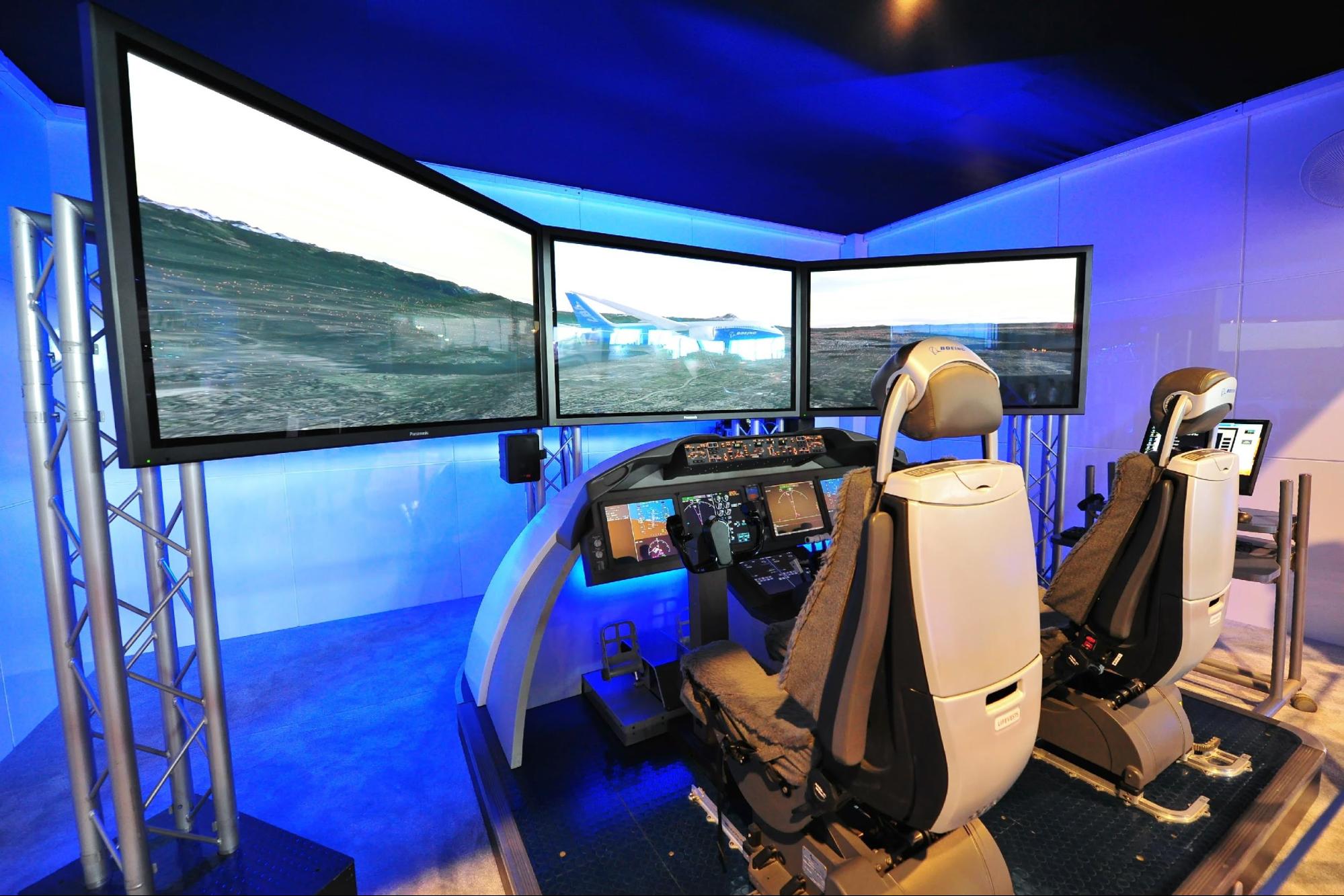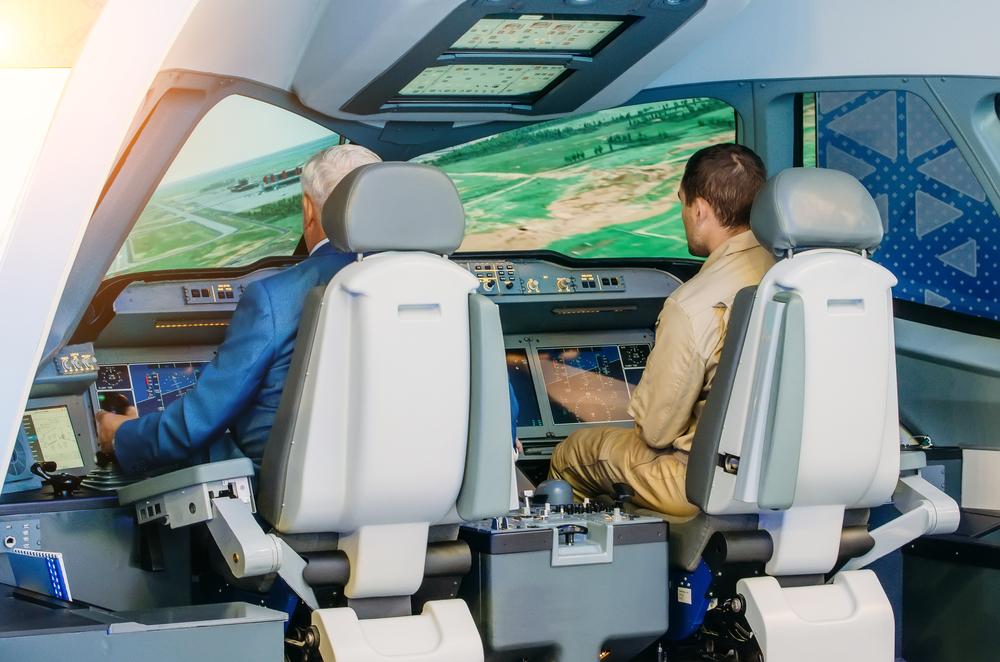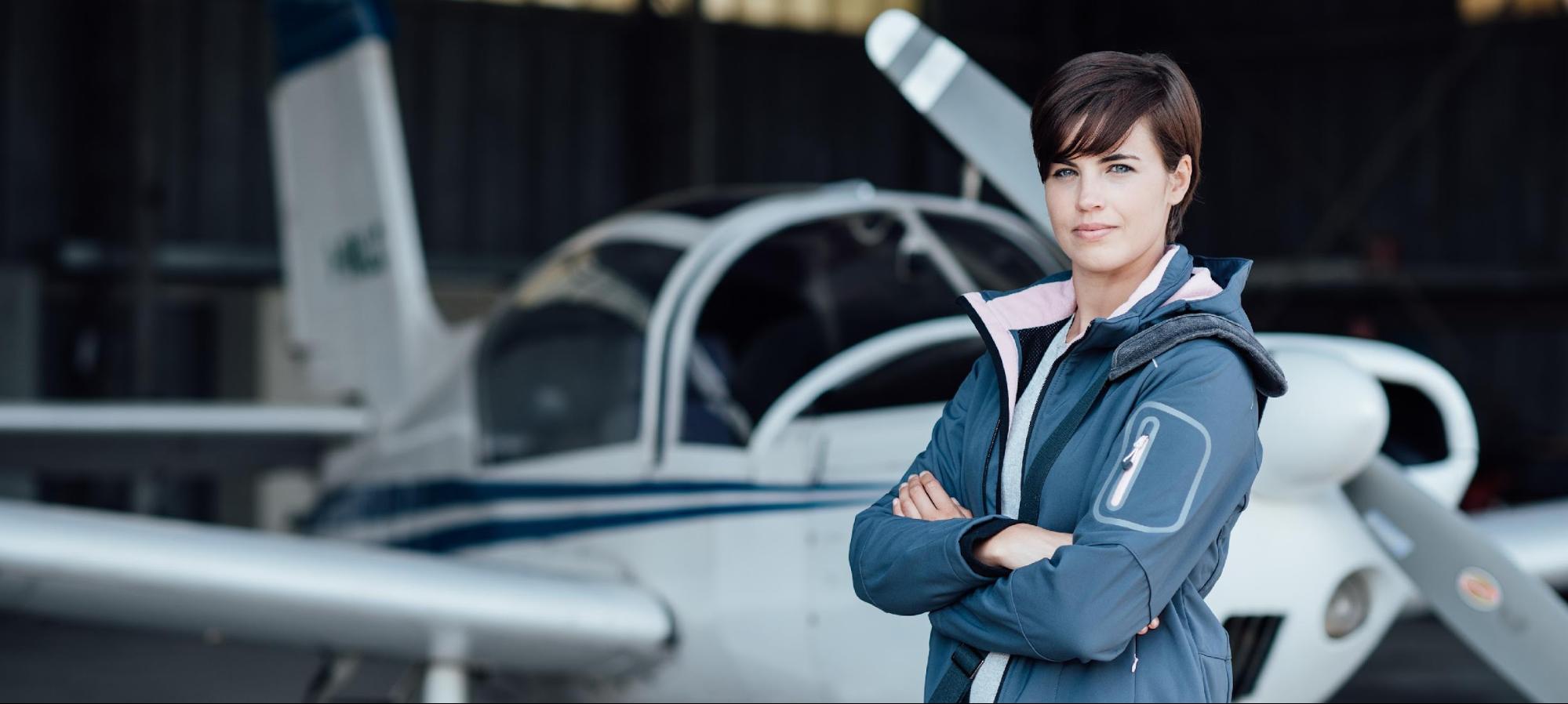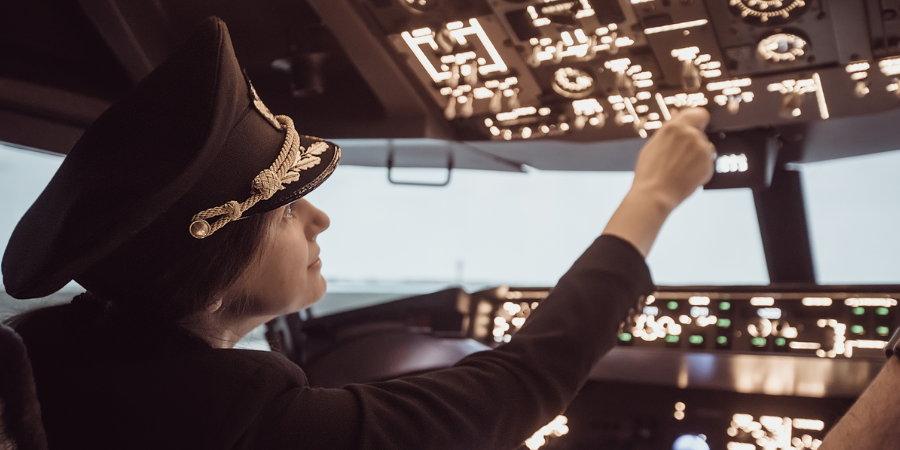What is an aviation simulator?
A traditional aviation simulator is one of the most valuable training tools available. They utilize a combination of pilot training software and a full-sized cockpit replica, designed to train and instruct students in real-time.
Every detail has to be exactly right – the instrument panel, all of the dials, inclement weather, and the hair trigger response of the instruments when they pull a yoke or tweak a toggle. It must be as true to life as possible, otherwise, the simulation has no relevance or positive effect. While they are certainly valuable, they are extremely expensive to purchase, install, and maintain.

What is a VR flight simulator?
- While the traditional simulator includes a functioning cockpit replica, Virtual Reality (VR) technology now allows students to wear a headset instead of sitting in the cockpit. When combined with the simulation software, the VR headset fully immerses them in the cockpit experience. This enables them to gain the valuable experience that they need without the additional cost and complicated equipment.
Each simulator contains an artificially-intelligent training program. This system gives real-time feedback on a pilot’s technique and educational goals, allowing them to learn the aerobatic manoeuvres that they need to master in order to complete their training. Simulators can be programmed to mimic the different aircrafts and programs that pilots will fly in their aviation careers.

What are the benefits of VR aviation simulation?
VR aviation simulation helps pilot training programs save heaps of money, as users wear immersive headsets instead of sitting in an expensive cockpit mock-up. These cockpit set-ups can cost hundreds of thousands of US dollars! They are small, portable, and easy to take from one location to another, which is perfect for pilots in remote locations, or for training programs in the military.
This advanced platform provides a controlled learning environment without the stress or worry of an actual flight. This allows them to hone their skills, build their confidence, and prepare for the real thing without ever leaving the classroom.
VR flight simulation isn’t just for newbies. Experienced pilots can use aviation simulators to upgrade their skills, learn about new advancements in technology, and practice for flight tests and interviews.
Best of all, a VR simulator is much better for a company’s bottom line, and can be much more affordable for students at all income levels. In the past, pilot training has been one of the most expensive forms of education. With the rise of VR pilot training programs, pilot school is a possibility for students from all income and class levels.
These new VR systems can be installed for less than a few thousand US dollars. When you compare this to the expense of a traditional cockpit simulator, the financial benefits become clear.

VR flight simulation has its limits
There is no denying that VR flight simulation does have its limits when compared to the traditional cockpit mock up. Other than the rudder pedals, joystick, and throttle levers, students only interact with digital versions of the remaining controls.
The switches, toggles, and dials are all activated simply by poking at the air next to them. While this gives the student a good approximation of where they are spatially, it doesn’t help them build the muscle memory and sensations of touch that are fundamental to a robust education.
In order to overcome this hurdle, VR developers, such as France’s Go Touch, are working on haptic programs that give the sensation of touch. This helps the pilot in training to feel like they are interacting with real knobs, levels, and toggles.
Sim to learn, fly to confirm
When it comes down to it, a virtual reality simulator is only just that – a simulation. Nothing can replace the training, education, and preparedness that results from actually flying the aircraft.
US Air Force experimentation manager, Lt. Col. Eric Frahm, has a saying that exemplifies the best practices in pilot training. “We have a tagline: ‘Sim to learn and fly to confirm’.”
More advanced simulators are certainly the way of the future, but as Frahm makes clear, all pilots also need to master and perfect their skills in the cockpit.
Up, up and away!





